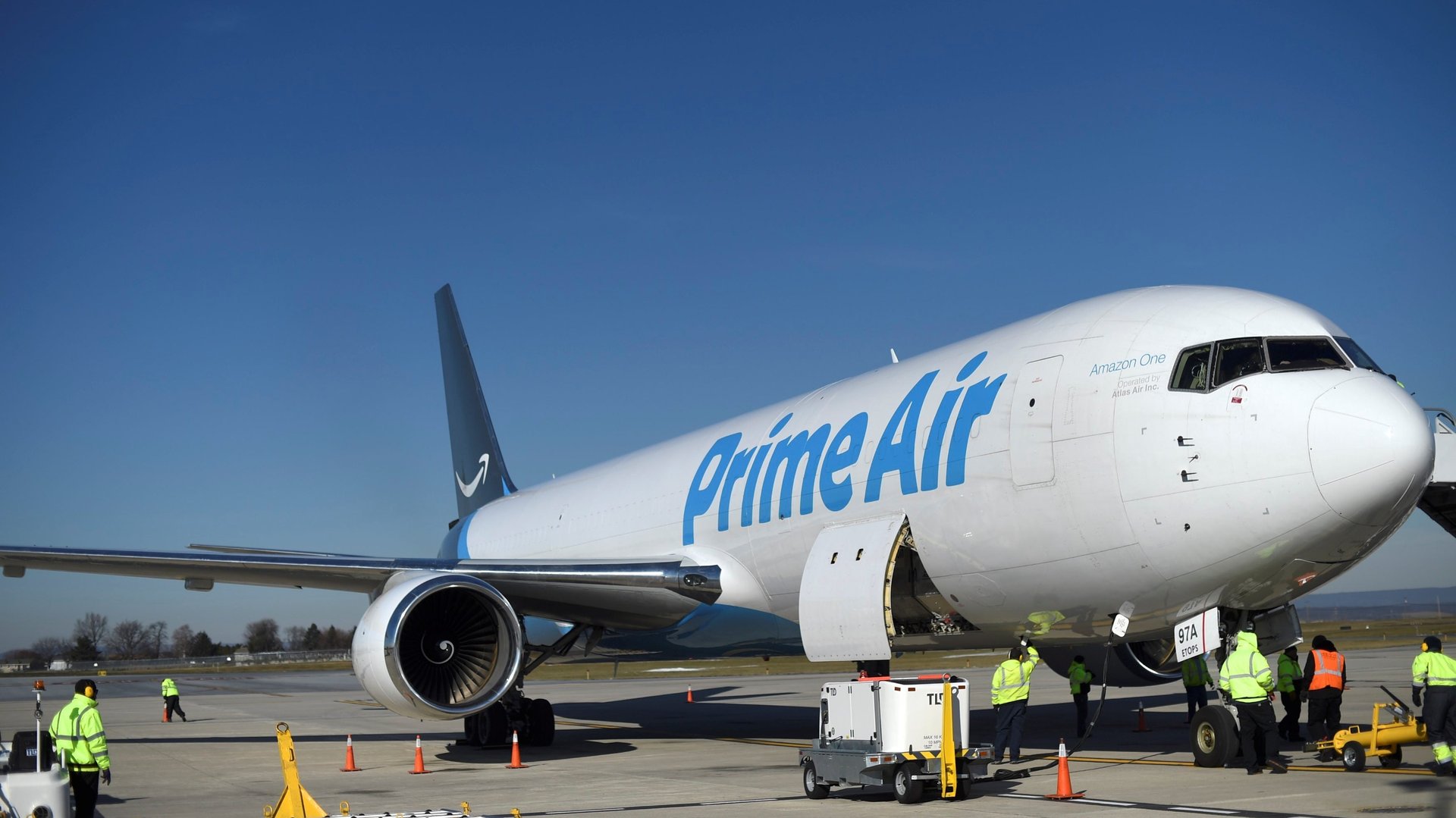Amazon’s ambitions to build an air freight empire got a lift from the pandemic
Amazon has harbored ambitions to build its own airline since launching Amazon Air, its in-house freight airline, in 2015. Since then, the company has made a series of long-term investments to expand its capacity to fly cargo between warehouses, mainly within the US and Europe.


Amazon has harbored ambitions to build its own airline since launching Amazon Air, its in-house freight airline, in 2015. Since then, the company has made a series of long-term investments to expand its capacity to fly cargo between warehouses, mainly within the US and Europe.
Then the pandemic dealt a logistical blow to Amazon’s supply chains. First, it prompted locked down consumers to spend more than ever on e-commerce, raising demand for Amazon to quickly ship packages. Next, it wrought havoc on factories and ports, creating massive shipping backlogs that made it harder than ever for Amazon to move goods around the globe on cargo ships.
The ensuing supply chain chaos has prompted the company to double down on its airplane dreams. Amazon went on a plane buying spree in the pandemic summer of 2020, fueling the fastest expansion yet of its air fleet. “They had plans for this, but the pandemic obviously pulled forward everyone’s demand for e-commerce and strained [Amazon’s shipping] capacity,” said John Blackledge, an analyst at the investment bank Cowen.
In 2020 alone, Cowen analysts estimate that Amazon invested $80 billion in logistics infrastructure—everything from warehouses to trucks to cargo planes—and they expect the company will wind up spending another $80 billion in 2021. That compares to the $56 billion Amazon spent on logistics infrastructure in the five years between Amazon Air’s launch in 2015 and the onset of the pandemic in late 2019, Cowen analysts estimate.
🎧 For more intel on air travel, listen to the Quartz Obsession podcast episode on flying business class. Or subscribe via: Apple Podcasts | Spotify | Google | Stitcher.
Amazon’s air freight investments aren’t just an urgent effort to move goods faster as the holiday shopping season approaches: Analysts who watch Amazon believe it will be one of the first steps toward competing directly with incumbent couriers like FedEx and UPS as a global delivery service.
Amazon expands its air fleet
Since 2015, Amazon Air has amassed a fleet of 75 cargo planes, giving it the fifth largest dedicated cargo fleet in the world according to the Planespotters database. In March, Amazon also bought a minority stake in the fourth largest cargo airline by fleet size, Air Transport Services Group, and the company owns warrants to buy a piece of the sixth-largest cargo airline, Atlas Air.
Amazon Air has also expanded its presence at airports. The airline now operates out of 42 US airports and eight European airports. In April, it opened a 660,000 square foot ground facility at a cargo airport in southern California, and in August it opened a $1.5 billion cargo hub at an airport in northern Kentucky.
So far, however, Amazon has restricted itself to domestic flights, according to researchers at DePaul University’s Chaddick Institute for Metropolitan Development who track Amazon Air’s growth. But that may change, as Bloomberg reports Amazon is looking to buy a dozen or more long-range cargo jets that “would let Amazon directly import products from China and other countries.” An Amazon spokesperson declined to comment on Bloomberg’s reporting or the company’s future plans for Amazon Air.
Air freight increases the value of Amazon Prime
On an April 29 earnings call, Amazon CFO Brian Olsavsky said owning the planes that shuttle goods between Amazon warehouses is another way for the company “to control the whole flow of products from the warehouse to the end customer.” That gives Amazon much more data about where its products are at any given moment, which allows the company to improve the efficiency of its behind-the-scenes logistics operation—and improve the customer experience by giving people more precise delivery estimates.
Amazon’s growing air fleet also helps the company make good on its promise to offer Prime customers one-day or same-day deliveries. Already, 70% of the US population lives within 100 miles of an airport served by Amazon. As the company expands its air fleet, it will bring more of its customer base within range of its fastest, airborne shipping options.
“Amazon is always continuing to work on improving that Prime value proposition,” said Blackledge. He says Amazon’s investments in faster shipping are both an offensive move—designed to attract more paying subscribers to Prime—and a defensive move to stave off e-commerce competitors who have started to catch up to Amazon’s two-day shipping standard.
Can Amazon Air rival FedEx and UPS?
The rapid growth of Amazon’s logistics operation, especially Amazon Air, suggests the company is preparing to launch a standalone delivery business.
That would replicate the strategy behind Amazon Web Services (AWS), the in-house division that met Amazon’s web hosting needs before becoming one of the largest cloud computing companies in the world (and Amazon’s most profitable unit). Amazon’s logistics arm appears to be following a similar path as an independent business.
Amazon Air quietly began delivering some packages for the US Postal Service as early as 2019, reports The Information. Last year, Amazon launched a delivery service for UK businesses and is now the country’s second-largest courier. In the US, a similar Amazon delivery business could be up and running within 18 months, estimate researchers at DePaul. Morgan Stanely analysts say it could arrive even sooner.